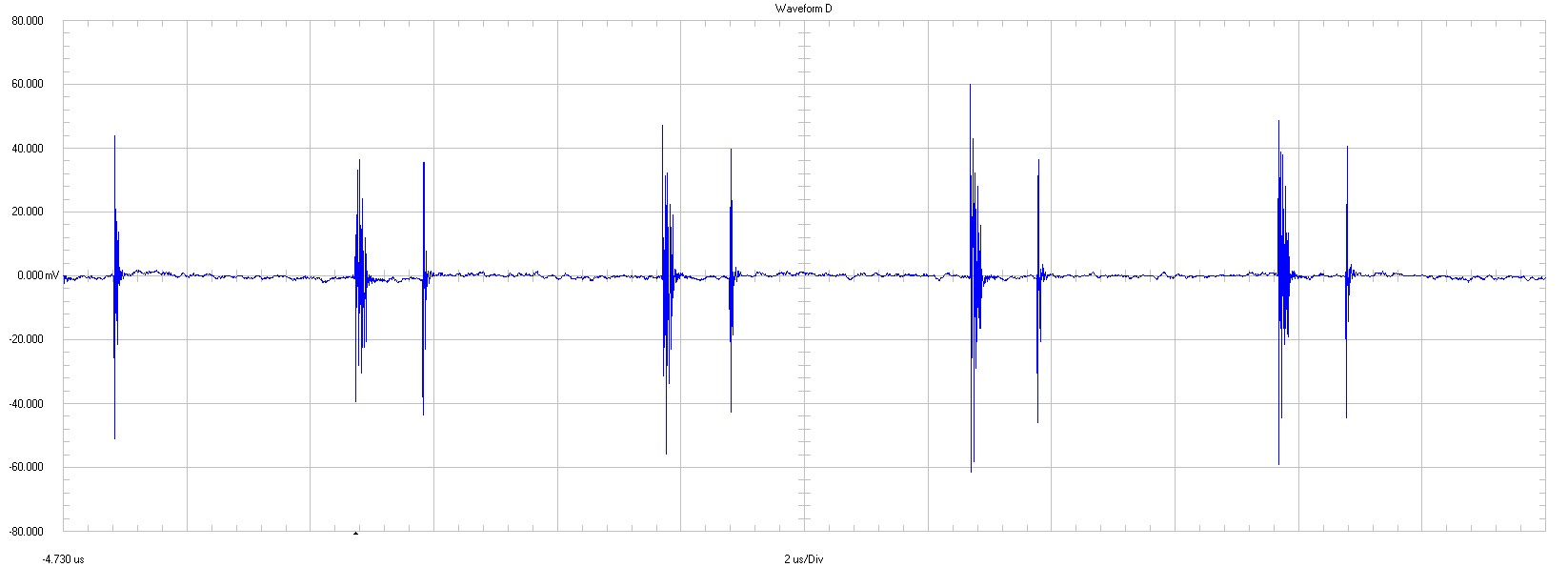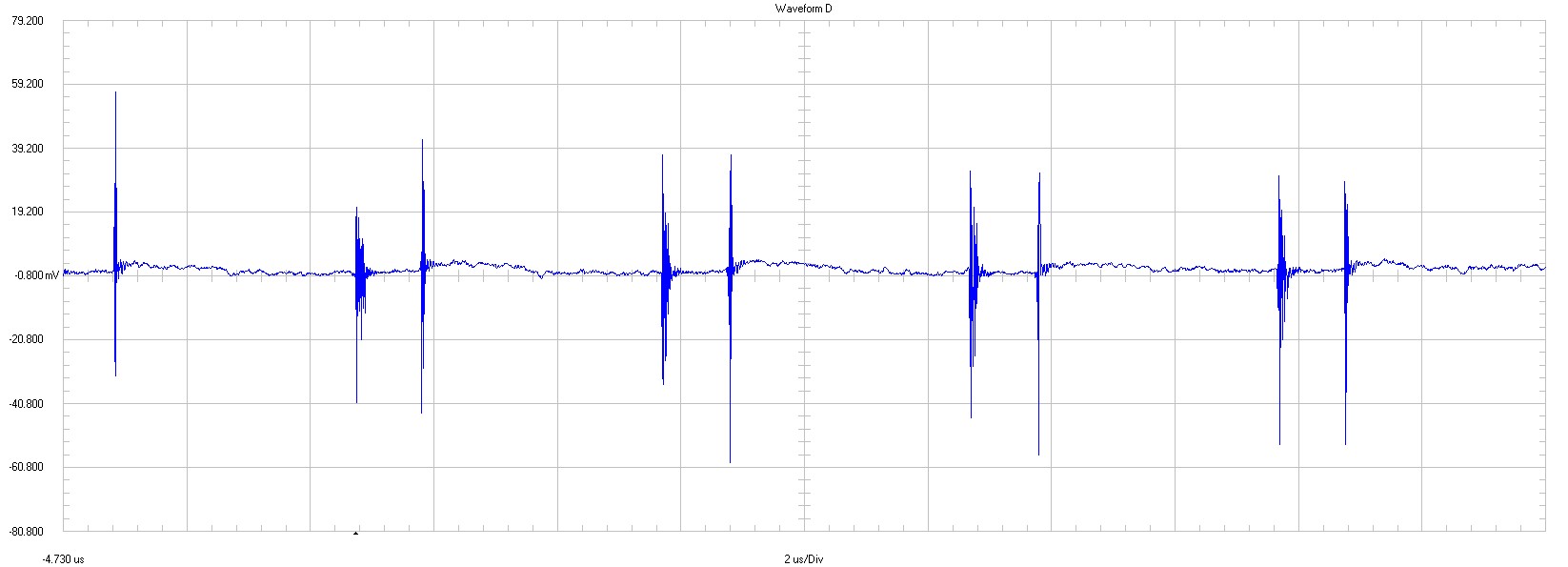TIDT272 April 2022
3.2.3 Secondary –5 V
The following three waveforms show the output voltage ripple of the three secondary –5 V outputs.

|
1 20 mV / div 2 µs / div 20 MHz bandwidth |

|
2 20 mV / div 2 µs / div 20 MHz bandwidth |

|
20 mV / div 2 µs / div 20 MHz bandwidth |